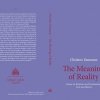On June 24, 2013, a small group of American pilgrims hailing from California, Colorado, Washington State and Florida, flew from the U.S. to meet in Thessaloniki, Greece, to begin a pilgrimage to monasteries and holy places in Greece and on Mount Athos, and in Serbia, Kosovo, Montenegro and Herzegovina. The pilgrimage was led by H.G. Bishop Maxim and organized by Fr. Blasko. Fourteen days later on Monday, July 8, the pilgrimage came to an end and we pilgrims flew out of Belgrade to our various destinations with full hearts, chastened minds, sore ankles and knees and mixed emotions. I think I can speak for all the pilgrims, and definitely for myself, that without a doubt it was the best pilgrimage I have ever been on. Our expectations were high and it far exceeded all expectations. One could say that there is nothing like traveling with a bishop to open doors and expand opportunities, and that was certainly true in our case. But I think this is not the whole story of the success of our pilgrimage, because I have been on pilgrimages with bishops before and it was nothing like this. Through the prayers and gentle arch-pastoral guidance of our Bishop Maxim, it seemed that a special grace and blessing and the loving providence of God hovered over our entire journey. We were blessed in a multitude of ways, great and small, almost too numerous to mention.
The richness of the total experience of this pilgrimage is beyond expression, and I apologize in advance to my fellow pilgrims if my words inevitably fall short of the fullness and brightness of what is undoubtedly etched in your memories. This pilgrimage was a success because it succeeded in being, for each of us, what it was intended to be, namely, true pilgrimage. But a journey to distant lands and to monasteries and holy places, even if called a “pilgrimage”, does not automatically transform itself into a true pilgrimage. In our contemporary world, dominated by virtualizing technology and overwhelmed with information, words, especially religious words like “pilgrimage” and “community”, often become debased and lose their true meaning. To understand what true pilgrimage is, the difficulty of attaining it in the contemporary world, and why our pilgrimage succeeded so admirably, let us recall the words of Orthodox theologian Philip Sherrard, who knew the Holy Mountain backwards and forwards through more than thirty years of frequent and long pilgrimages and who, in his 1977 article “The Paths of Athos”, observed that “a pilgrimage is not simply a matter of getting to a particular shrine or holy place. It is a deliberate sundering and surrender of one’s habitual conditions of comfort, routine, safety, convenience” in which “the pilgrim sets out on a quest which is inward as well as outward and is, in varying degrees, into the unknown. In this sense, he becomes the image of the spiritual seeker.” The essence of pilgrimage then, is, in a way, the entire Christian journey in concentrated and intensified miniature. True pilgrimage is a deliberate break in the routines of life to embark on an ascetic and initiatory journey to recover the ontological Center which is also the protological Origin and the eschatological End of our being in Christ. It is a kind of interiorized monasticism through an exteriorized xeniteia (exile or pilgrimage). In the Ladder of Divine Ascent, the first seven steps (renunciation, detachment, exile, obedience, repentance, remembrance of death, and compunction) are a summary of the Christian ascetical path, just as the last seven steps (meekness, humility, discernment, stillness, prayer, dispassion and love) are the glorious fruits of this path. In Step Three, xeniteia (exile or pilgrimage), St. John says “xeniteia is separation from everything in order to keep the mind inseparable from God.” This lapidary sentence expresses the essence of pilgrimage. With each effort to climb the difficult and often slippery steps guarding the entrance to the many holy places we visited, with each veneration of a holy and incorrupt relic or body of a saint, with each hour spent standing in prayer and praise in an ancient monastery, one could see how this xeniteia, this exile from everydayness in a quest for the Eternal Nowness of the Presence of God, began to work its spiritual transformation in us pilgrims, interiorly in each of us as individual persons, and also collectively, gradually, through our shared struggles, forming in us a community sensitive to the spirit of place and the history of holiness, a loving community of temporary exiles, pilgrims and ascetics looking out for each other, seeking the common goal of light (lucha or phos) in Christ. We started by renouncing or leaving behind the comforts of home, gradually detaching ourselves from our ordinary lives, the rigors of the pilgrimage forming our shared experience, exiling ourselves from comfort, convenience and consumerism, until we began to learn the obedience of a pilgrim, and experience, through a sudden shaft of light piercing the heart like a spear, perhaps as we bent to kiss the forehead of St. Basil of Ostrog in his cave, or at some other numinous moment, the illumination of a grace that drew us to repentance, remembrance of death, and that joy-making mourning of true compunction.
.






